More than 2000 years ago, a Greek knew that the Earth was spherical and calculated its circumference.
In the mid-20th century, we started launching satellites into space to help determine the exact circumference of the Earth: 40,030km. But more than 2,000 years earlier, a man in ancient Greece had figured out a nearly identical figure using nothing more than a stick and his brain.
That man was Eratosthenes . A Greek mathematician and head librarian at Alexandria. He also created the sieve named after him - the sieve of Eratosthenes - to filter out prime numbers less than 100.
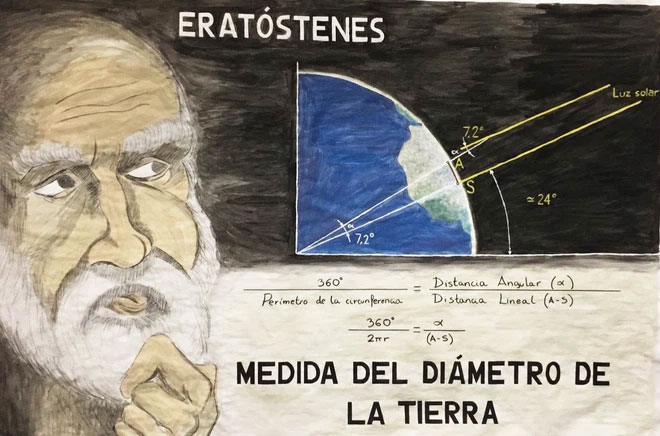
Mathematician Eratosthenes (276 BC - 194 BC).
Eratosthenes had heard that in Syene (modern Aswan, Egypt), a city south of Alexandria, no shadow fell at noon on the summer solstice and the sun was directly overhead. He wondered if this was true in Alexandria.
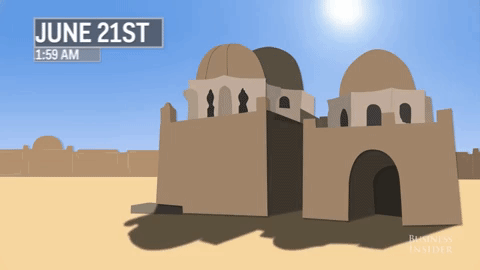
To experiment, on June 21, he stuck a stick straight into the ground and waited to see if a shadow from the stick would appear at noon. It turned out that there was, and he measured the shadow to be about 7.2 degrees.
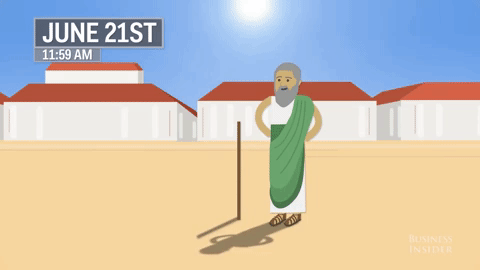
If the sun's rays are coming at the same angle at the same time of day and a stick in Alexandria casts a shadow while a stick in Syene does not, it means that the Earth's surface is curved. And Eratosthenes probably knew that.
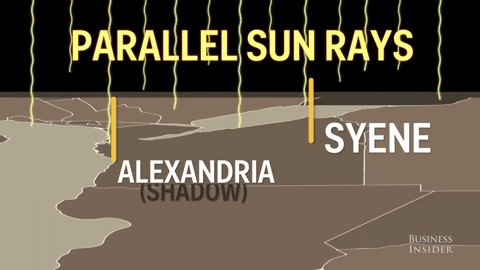
The idea that the Earth was spherical was proposed by Pythagoras around 500 BC and confirmed by Aristotle several centuries later. If the Earth was indeed a sphere, Eratosthenes could use his observations to estimate the circumference of the entire planet.
Since the difference in shadow length between Alexandria and Syene is 7.2 degrees, this means that the two cities are 7.2 degrees apart on the 360-degree surface of the Earth. Eratosthenes hired a man to measure the distance between the two cities and found that they were 5,000 stadia apart, which is about 800 kilometers.

He could then use simple ratios to find the circumference of the Earth - 7.2 degrees is 1/50 of 360 degrees, so 800 times 50 equals 40,000km.
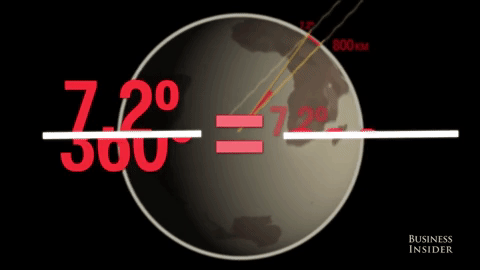
If you google 'circumference of the Earth' you will see that the number is 40,075 km. This is because the Earth is slightly tilted, so its circumference from the North Pole to the South Pole is 40,008 km and its circumference around the equator is 40,075 km. If it were a perfect sphere, its circumference would be 40,030 km.

And just like that, a Greek 2200 years ago figured out the circumference of our entire planet with just a stick and his brain, albeit with just a slight error.
How did the Greeks know the Earth was spherical 2000 years ago?
- The perfect spherical star is 5,000 light-years from Earth
- Discover the birthplace of Zeus
- Amphibious Spherical Robot Helps Chinese Police Patrol
- Discovering the Greek seabed statue helps counteract
- Aliens can plant life germs on Earth
- Find the 'oldest' space dust on earth
- The mural paints Apollo 2,000 years old
- The massive base of the ancient Greek navy
- Earth Weighing Experiment
- Detecting the ghost of
- The giant sphere suspected of belonging to the mysterious civilization 1,500 years ago
- Scientists have calculated the time the Moon touched the Earth
 'Fine laughs' - Scary and painful torture in ancient times
'Fine laughs' - Scary and painful torture in ancient times The sequence of numbers 142857 of the Egyptian pyramids is known as the strangest number in the world - Why?
The sequence of numbers 142857 of the Egyptian pyramids is known as the strangest number in the world - Why? History of the iron
History of the iron What is alum?
What is alum? What would happen if you dug a hole through the Earth and jumped in?
What would happen if you dug a hole through the Earth and jumped in?  Chilling discovery of cosmic object that almost brought the Earth to 'apocalypse'
Chilling discovery of cosmic object that almost brought the Earth to 'apocalypse'  The Sun goes into hibernation, will the Earth usher in a new ice age?
The Sun goes into hibernation, will the Earth usher in a new ice age?  Discovery of space object powerful enough to tear apart the Earth
Discovery of space object powerful enough to tear apart the Earth  NASA to test 'pneumatic brakes' for Mars lander
NASA to test 'pneumatic brakes' for Mars lander  Breakthrough discovery of planet with more water than Earth
Breakthrough discovery of planet with more water than Earth 